Spring is a sweet time of the year for many strawberry growers when this juicy red fruit is ready to harvest. However, strawberries are in peak season across the U.S. at different times, depending on the region’s climate.
For example, Floridians can enjoy locally grown strawberries as early as March. But Michiganders might have to wait until June for their local harvest. However, if you usually eat strawberries shipped in from somewhere else, you might never know exactly when they ripened on the plant.
This fact is all the more reason to take a quick virtual trip around the five main regions of the U.S. to learn when strawberries are harvested in each. Let’s explore when strawberries are ripe in the country’s Northeast, Southeast, Midwest, Southwest, and West regions. Then we’ll discover how to know when strawberries are ripe and how they are commercially harvested.
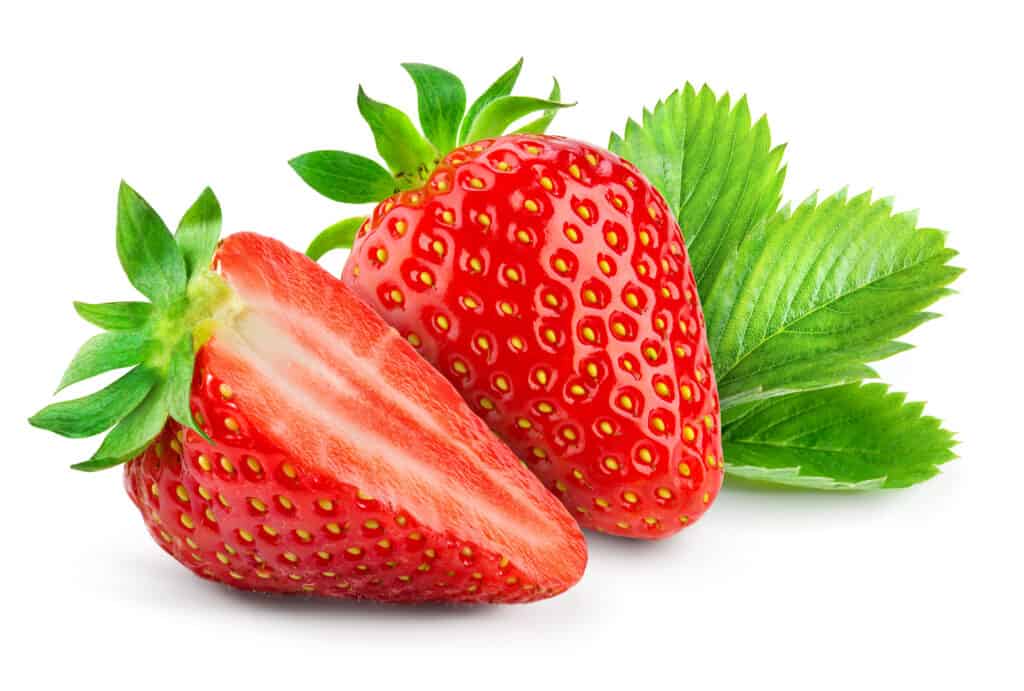
Strawberries are in peak season in the U.S. in the spring and summer months.
©Tim UR/Shutterstock.com
Northeast Region: Late May to Early July
In the Northeastern states, strawberries are in peak season from late May to early July. However, according to PennState Extension, the specific timing of strawberry production in any state can vary based on the plant variety.
For example, common Pennsylvania strawberries include June-bearing and day-neutral varieties. These plants bear fruit at different times during peak seasons, and day-neutral varieties bloom again after the peak season passes.
- June-bearing strawberries have a confusing name because they don’t just bear fruit in June. The June-bearing plants have differing bloom times, from early to late season. For example, the Galetta is a June-bearing strawberry that produces ripe fruit early in the season. But the AC Valley Sunset plant bears ripe strawberries late in the season.
- Day-neutral strawberries have three production peaks throughout the growing season. They bloom first in June, again in midsummer, and then produce their final round of fruit in late August through the first frost. The midsummer crop is often the smallest due to high heat. Day-neutral strawberries are replacing ever-bearing strawberry varieties more and more lately. The ever-bearing strawberry plant typically produces ripe fruit twice a season, in early and late summer.
PennState Extension recommends experimenting with different varieties of strawberry plants to determine which ones do well in your region. And note that some strawberry plants might do well in the southern area of a state and not be as successful in northern regions.
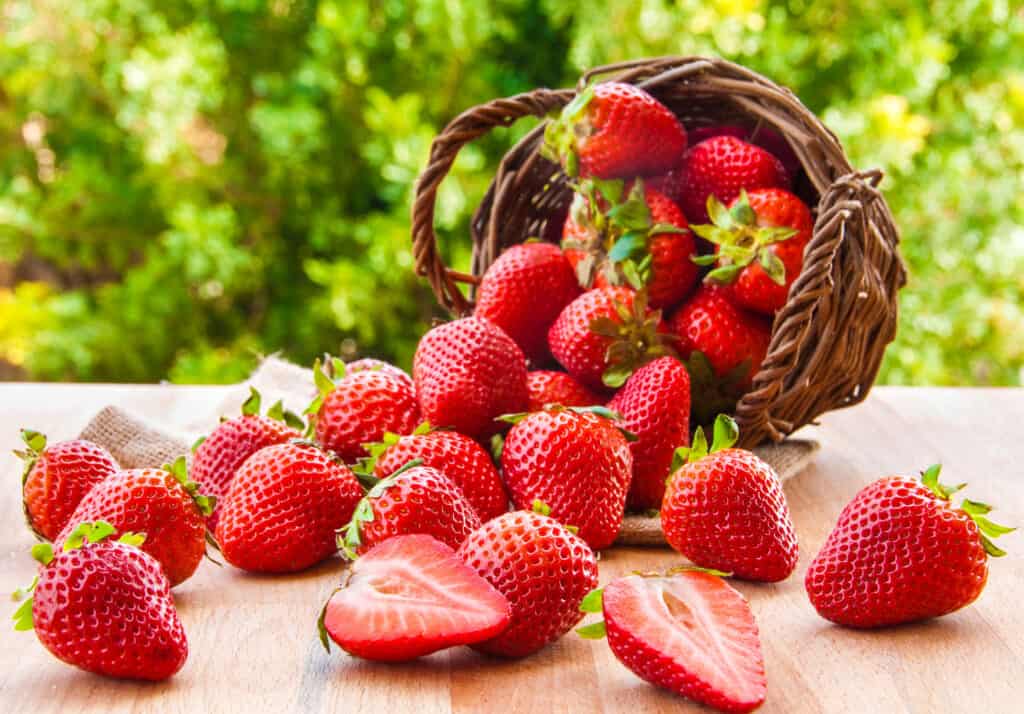
Ripe strawberries are red, juicy, and usually very sweet.
©iStock.com/MariaUspenskaya
Southeast Region: Late March to Early June
Strawberries are in peak season through the southeastern states in spring, usually from late March to early June. However, due to climate differences, North Carolina’s peak season might differ slightly from Georgia’s peak strawberry season.
Did you know that Florida is the second-highest producer of strawberries in the U.S.? Florida is second only to California, which produces over 90% of the country’s commercially harvested strawberries.
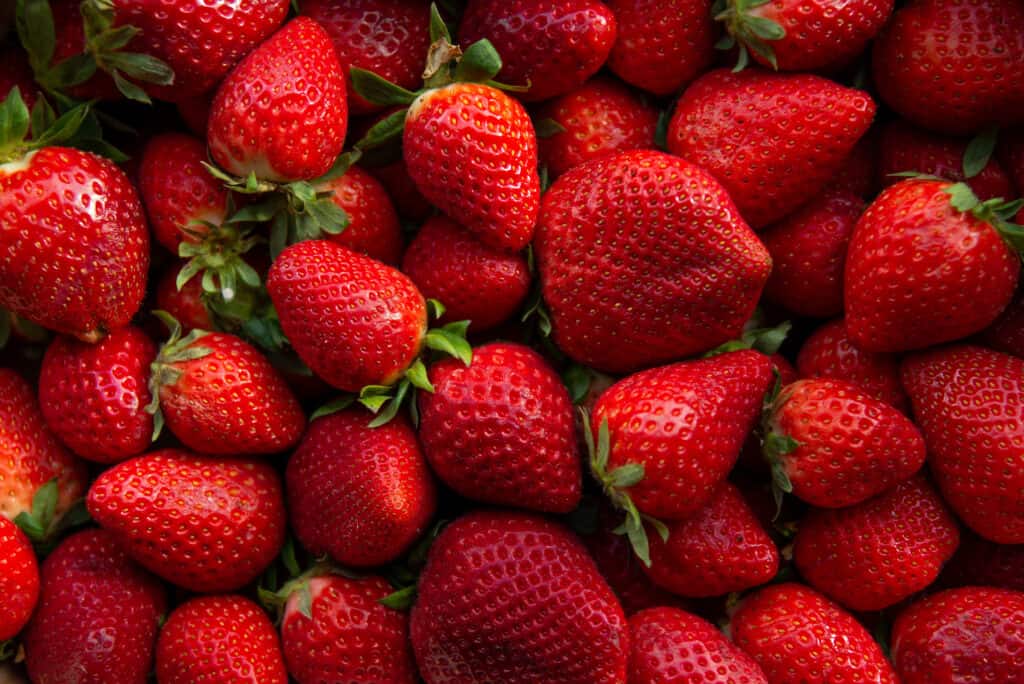
Different strawberry varieties ripen at different times throughout the peak seasons.
©Erika Anes/Shutterstock.com
Midwest Region: Late May to Late June
The Midwestern states, like Michigan and Ohio, produce strawberries that ripen in late spring. Strawberries are in peak season in these states for a slightly shorter window compared to some other regions of the country. However, as in other states, the specific timing of strawberry harvests depends on the plant variety.
Earliglow strawberries are June-bearing plants popular in Michigan gardens that ripen early in the peak Midwest season. This fruit is a highlight of Michigan’s peak strawberry season every year.
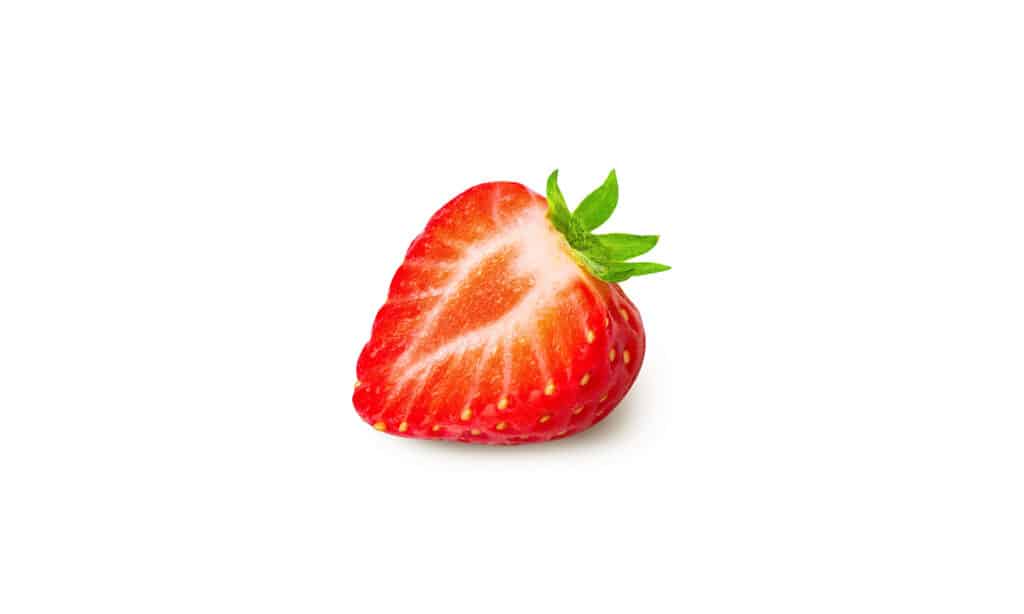
Most ripe strawberries have a uniform red color across the fruit. However, there are white strawberry varieties too.
©iStock.com/Ekaterina_Simonova
Southwest Region: Early March to Late June
Strawberries are in peak season across the U.S. Southwestern states in spring. However, the peak season might begin in late winter in southernmost states like Texas. For example, you might pick ripe strawberries in late February in Texas, while Colorado residents may need to wait until May.
Again, differing peak season ranges across the U.S. are due to the local climate and plant varieties.
Colorado State University Extension suggests that ever-bearing varieties are the best strawberries for home gardens in their state.
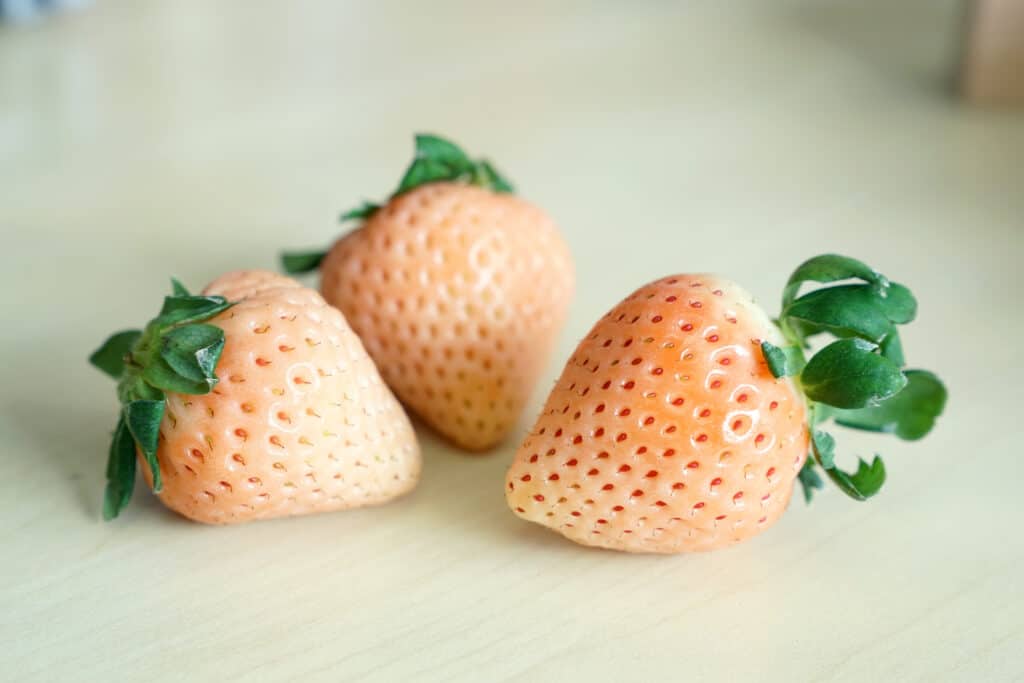
Knowing the growth habit of each strawberry variety is important for knowing when the fruit is ripe.
©Esmond Poh/Shutterstock.com
West Region: April to July
The West region of the U.S. produces most of the country’s strawberries, with California ranking far above the rest of the pack. California produces more strawberries than any other state and over 90% of commercial strawberry production across the entire country.
You can start picking strawberries in mid to late spring in California, and the peak season continues through mid-summer.
However, as in all regions, some strawberry varieties are later bloomers that produce fruit in early fall.
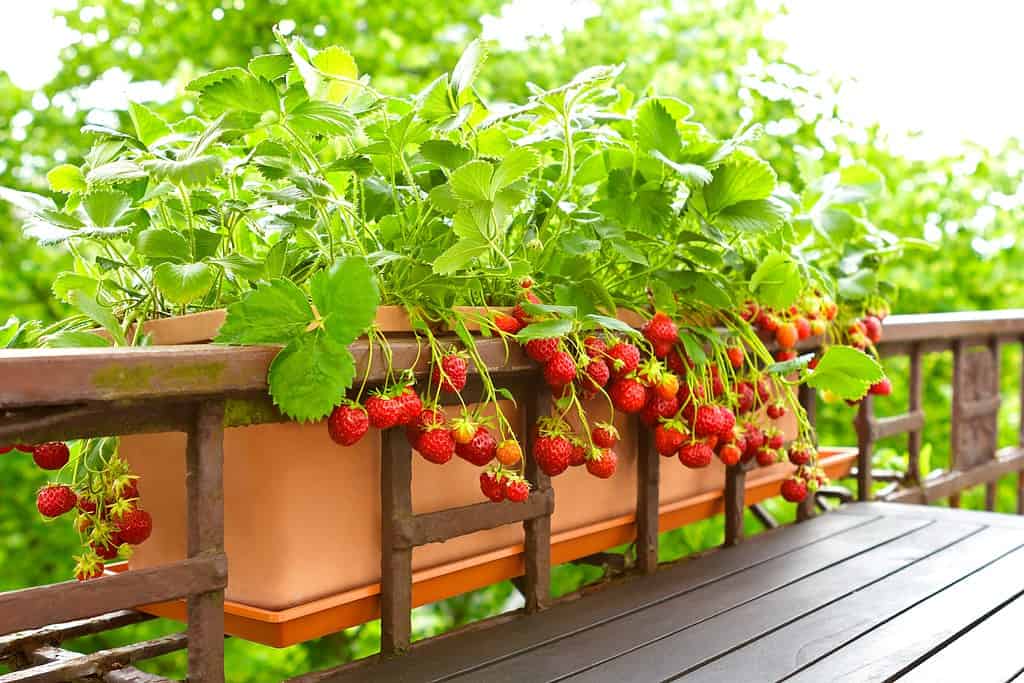
Check strawberries for at least their color, texture, and scent to know when they are ready to pick and eat.
©Agenturfotografin/Shutterstock.com
How do you know when strawberries are ripe?
Testing a strawberry’s color, texture, scent, size, and taste can tell you whether it’s ripe and ready to eat. Knowing when a strawberry is perfectly ripe, with peak flavor and juiciness, is a skill that’s easy to master. Here are some tips for identifying ripe strawberries:
Color: Ripe strawberries have a uniform deep red color. So if your strawberries still have white or green patches on the fruit, they probably aren’t ripe yet. That said, there are plants that produce strawberries that are white when ripe! For example, the white jewel strawberry has white flesh when ripe and is one of the most expensive fruits in Japan.
Texture: A ripe strawberry should feel firm with a slight yield when gently pressing it. Is the flesh overly soft or mushy? It’s probably overripe but will still taste great in a smoothie or with yogurt!
Scent: Are your ripe-looking strawberries also strongly scented? Strawberries with an intense, sweet aroma are likely ready to harvest.
Size: While some ripe strawberries are small, the majority of them are medium to large. However, the size of these bright berries depends on the variety. So double-check the growing instructions for what size of ripe berries to expect from your plants.
Taste: Strawberries harvested in their peak season are usually very sweet and juicy. That said, some ripe strawberries are tart or sour due to various factors like extreme weather changes during cultivation. Fortunately, tart strawberries are still delicious and can be sweetened or added to sweet treats like a berry bowl.
Do strawberries continue to ripen after harvest?
Strawberries stop ripening once picked, so it’s essential to give them plenty of time on the plant to get red, juicy, and sweet! By paying attention to at least their color, texture, and scent, you can easily learn how to pick a perfectly ripe strawberry every time.
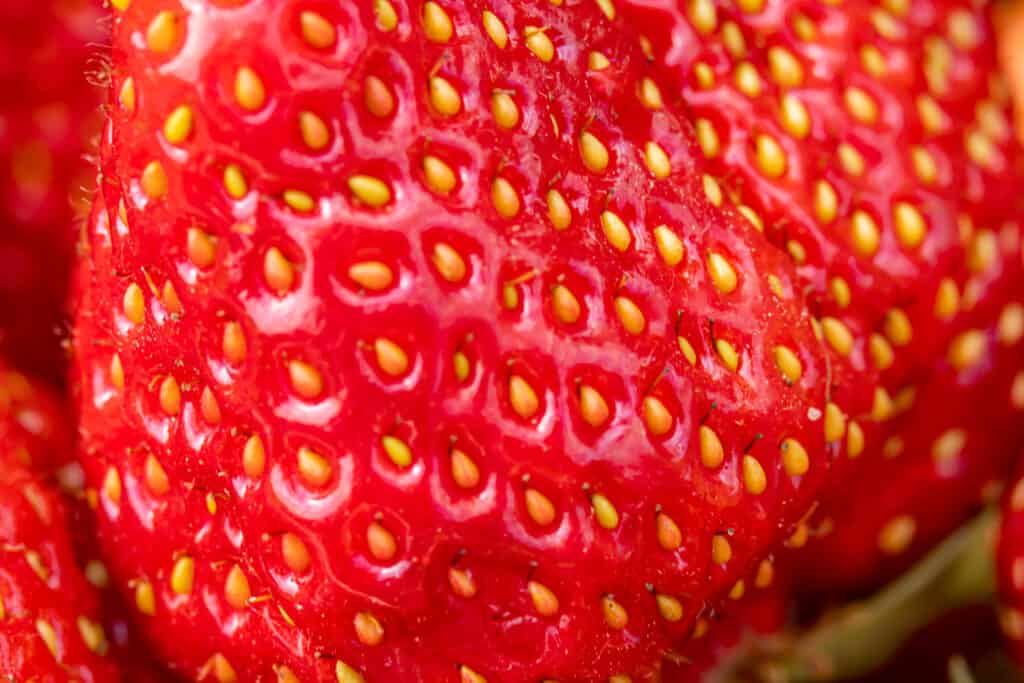
A ripe strawberry will be firm with just a slight amount of give when you press the flesh.
©iStock.com/Oleg Prolat
How are strawberries commercially harvested in the U.S.?
Many commercial strawberry farms harvest their berries via handpicking. This method ensures that most of the fruit is ripe and damage-free. Specialty Crop Industry states that the following steps are common for strawberry farms at harvest time:
- Farm workers cut the berries at their stems, then place them into containers.
- During spring and summer, when strawberries are in peak season across the U.S., the berries are picked every 3-4 days.
- Commercial strawberry harvests typically last up to 6-8 weeks.
However, some modern farms use a combination of farm workers and motorized machinery. Drought conditions and labor shortages in states like California can make the help of mechanical technology ideal or even necessary.
Strawberry-picking Robots
Strawberry-picking robots are becoming more popular for commercial farming as technology advances. Currently, some strawberry-picking robots have around 95% accuracy. That’s an incredible accomplishment, but robots are still not as trustworthy as human labor. As self-learning AI technology improves performance, robots might become a regular sight in strawberry fields.
Specialty Crop Industry explains that current challenges to using strawberry-picking robots are the following:
- A robot’s ability to navigate strawberry fields isn’t as accurate as needed.
- The robots need better accuracy in finding and selecting the best, ripest fruit.
- Strawberry-picking robots need more reliability in properly picking and releasing fruit.
- Robots need mobility improvement to avoid damaging strawberries and their blossoms on the plant and when placed in containers by the machines.
So farm workers are still the best resource for picking strawberries to ensure the highest quality harvest.
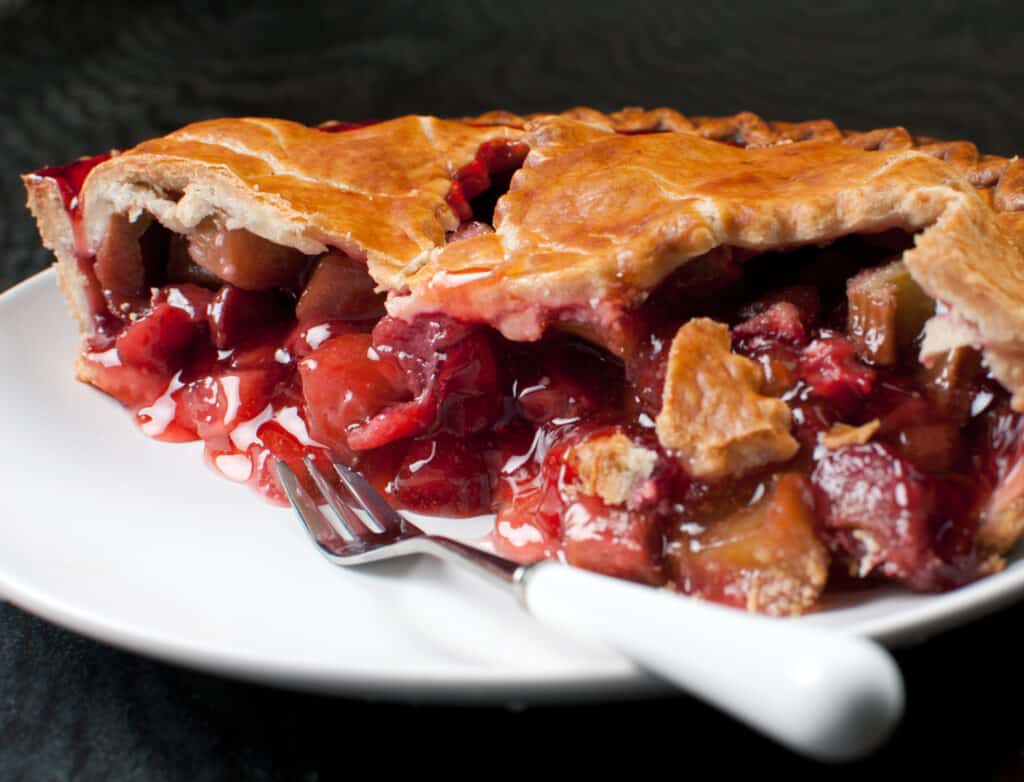
Peak strawberry season is the perfect time for pies made with spring and summer fruit.
©iStock.com/razmarinka
Strawberries are in peak season across the U.S. at different times
Local climates and strawberry plant varieties determine when strawberries are in peak season across the U.S. Yet; there are general peak seasons per region when strawberries are ripe, juicy, and hard to resist! Whether handpicked or plucked by robots, peak strawberry seasons produce differing crop yields per year due to weather conditions, like a drought in California. But every strawberry picked is worth the effort in all five major regions of the country.
The photo featured at the top of this post is © iStock.com/romiri
Thank you for reading! Have some feedback for us? Contact the AZ Animals editorial team.







